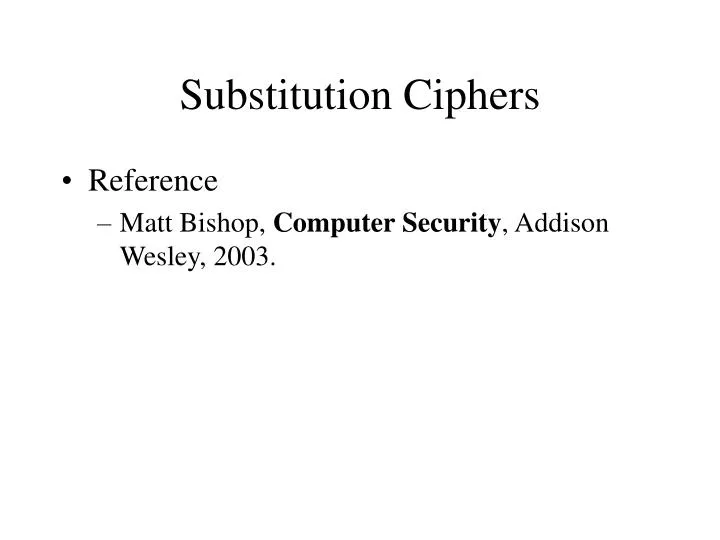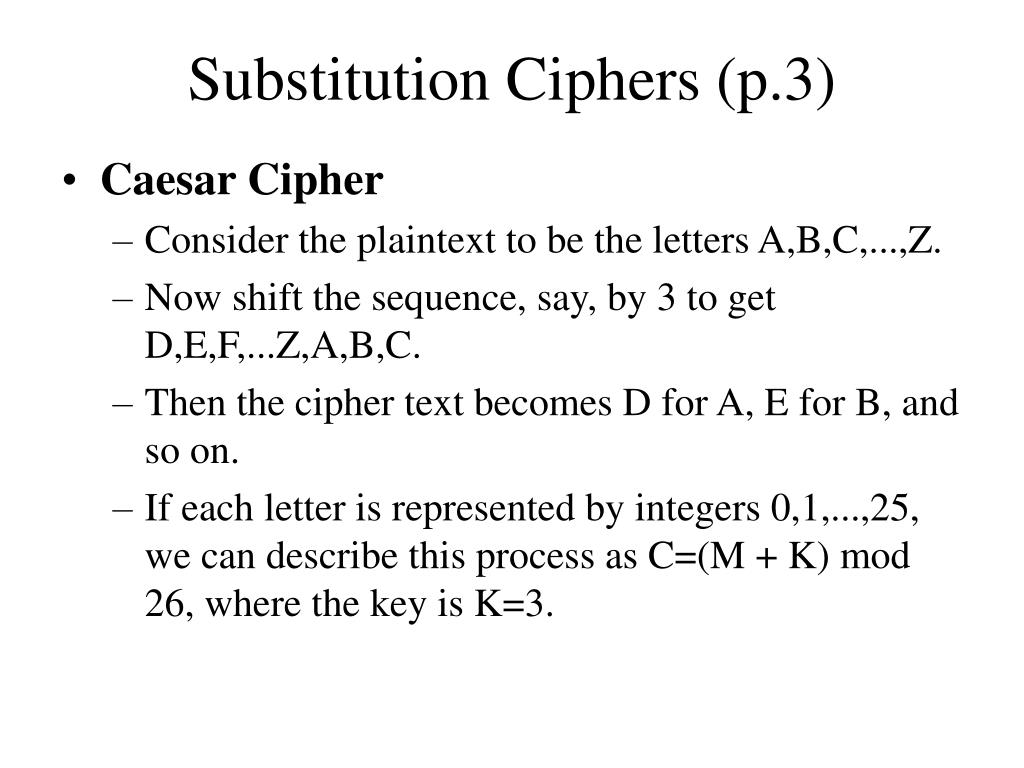

- #SUBSTITUTION CIPHER SOLVER HOW TO#
- #SUBSTITUTION CIPHER SOLVER FULL#
- #SUBSTITUTION CIPHER SOLVER CODE#

XAANTQIFBFSFQUFCZFSBSCSBIMWHWLNKAXBISWGSTOXLXTSWLUQLXJBUUWLWISTBKOWLSWGSTOXLXTSWLīSJBUUWLFULQRTXWFXLTBKOWLBISOXSSOWTBKOWLXAKOXZWSBFIQSFBRKANSOWXAKOXZWSFOBUSWJBSBF We have the following ciphertext: SOWFBRKAWFCZFSBSCSBQITBKOWLBFXTBKOWLSOXSOXFZWWIBICFWUQLRXINOCIJLWJFQUNWXLFBSZXFBT In addition, there is a theoretical limit, given by the unicity distance which says that 28 characters are required to get a unique decryption, any cipher shorter is not breakable unless more information is available such as a crib. This is because the statistics of short messages can deviate significantly from the long term statistics of english. In general, you will have trouble breaking ciphers less than 100 characters in length. Words in the plaintext and base the fitness on the presence of these.Ī final mention should be made about breaking short ciphers. One possible way to overcome this problem, at the expense of algorithm speed, is to try to find Including single letter frequencies, bigrams, trigrams etc. This is a limitation of any algorithm based on statistical properties of text, Piece of garbled plaintext which scores much higher than the true plaintext. The hill-climbing algorithm will most likely find a key that gives a
#SUBSTITUTION CIPHER SOLVER FULL#
This is full of unusual quadgrams, so we expect it to have a fairly low score.
#SUBSTITUTION CIPHER SOLVER CODE#
This example comes from Simon Singhs "The Code Book": From Zanzibar to Zambia to Zaire, ozone zones make zebras run zany zigzags However, this system fails when the true plaintext does not have statistics similar to english, If the statisitics match closely, we say that the fitness is high. This is done, as explained earlier, by comparing quadgram statistics from the plaintext to quadgram statistics of english text. The algorithm depends on the fitness function correctly distinguishing whether the plaintext from one key is better than plaintext from another. We may restart the algorithm 100's of times in the search for the best key. If this happens you can run theĪlgorithm again with a different parent in the hope it may reach the true solution this time. Where there are no simple changes that can be made to the key to improve fitness, and yet it is not at the true solution. This means the hill-climbing algorithm is stuck in a 'local maximum', In this case the run has failed and must be repeated with a different starting key. Go back to 2, unless no improvement in fitness occurred in the last 1000 iterations.Īs this cycle proceeds, the deciphered text gets fitter and fitter, the key becomes better until either the solution appears, or,.If the fitness is higher with the modified key, discard our old parent and store the modified key as the new parent.Change the key slightly (swap two characters in the key at random), measure the fitness of the deciphered text using the new key.Rate the fitness of the deciphered text, store the result. Generate a random key, called the 'parent', decipher the ciphertext using this key.The hill-climbing algorithm looks like this: One that produces deciphered text with the highest likelyhood. In this way we can rank different decryption keys, the decryption key we want is the 'QKPC' which are very rare in normal english. Message will probably contain sequences e.g. The statistics of english text, then calculating the probability that the ciphertext comes from the same distribution.
#SUBSTITUTION CIPHER SOLVER HOW TO#
For a guide on how to generate quadgram statistics, and some python code for rating the fitness of text, see this tutorial. For this we will use a fitness measure based on quadgram statistics. While a jumble of random characters will get a low score (a low fitness).

A piece of text very similar to english will get a high score (a high fitness), This is called rating the 'fitness' of the text. For this approach, we need a way of determining how similar a piece of text is to english text. We will be using a 'hill-climbing' algorithm to find the correct key. This means we cannot test them all, we have to 'search' for good keys. The number of keys possible with the substitution cipher is much higher, around 2^88 possible keys. This allowed a brute force solution of trying all possible keys. In those cases, the number of keys were 25 and 311 respectively. The substitution cipher is more complicated than the Caesar and Affine ciphers. writing programs to solve these ciphers for us. On this page we will focus on automatic cryptanalysis of substitution ciphers, i.e. The Simple substitution cipher is one of the simplest ciphers, simple enough that it can usually be broken with pen and paper in a few minutes. Cryptanalysis of the Simple Substitution Cipherįor a recap of how substitution ciphers work, see here.


 0 kommentar(er)
0 kommentar(er)
